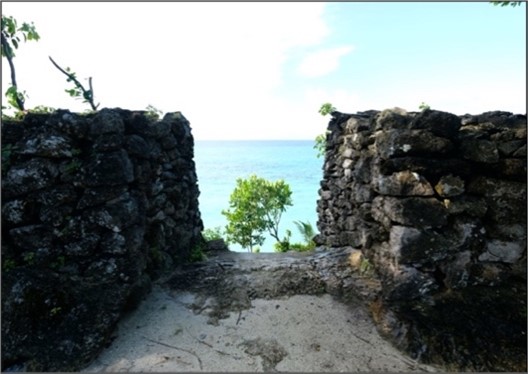Wakatobi Islands: Archaeological, Historical, and Maritime Tradition Perspectives | Kepulauan Wakatobi: Perspektif Arkeologi, Sejarah, dan Tradisi Maritim
DOI:
https://doi.org/10.26721/spafajournal.2021.v5.661Keywords:
traditional fort, the archaeology of the islands, Wakatobi, maritime traditions, benteng tradisional, arkeologi kepulauan, tradisi kemaritimanAbstract
Wakatobi Islands, which are located east of Buton Island, were part of the territory of the Buton Kingdom in the past. Wakatobi Islands cover an area known as a shipping route connecting the eastern and western regions of the Nusantara archipelago. The historical journey of the people of Wakatobi Islands led them to have a strong maritime tradition in Nusantara. This paper discusses issues related to the initial overview of the Wakatobi Islands from the perspectives of archaeology, history, and maritime traditions. The methods used include survey and observation as well as literature study and interviews. The results obtained provide a regional profile of the Wakatobi Islands, which shows that archaeological remains and the traditional fortresses spread in the area are residential sites that reflect the archaeological character of the islands. The identification that we have conducted on the ceramics shows that they date from at least the 15th century, with ceramics from the Qing dynasty (17th to 19th centuries) being the most dominant. The historical perspective also gives an understanding that the maritime tradition of the Wakatobi people has strong historical roots in the formation of communities in this region. Likewise, the history and maritime traditions of the Wakatobi people are correlated with archaeological remains which are the traces of immigrants who developed the communities of the Wakatobi Islands.
Kepulauan Wakatobi yang terletak di sebelah timur Pulau Buton merupakan bagian dari wilayah kekuasaan Kesultanan Buton di masa lampau. Wilayah kepulauan ini adalah kawasan yang dikenal sebagai jalur pelayaran penghubung wilayah timur dan barat Nusantara. Perjalanan sejarah masyarakat Kepulauan Wakatobi sekaligus mengantarkan wilayah ini memiliki tradisi kemaritiman yang kuat di nusantara. Tulisan ini membahas permasalahan terkait tinjauan awal Kepulauan Wakatobi dipandang dari perspektif arkeologi, sejarah dan tradisi kemaritiman. Metode yang digunakan adalah metode survei atau observasi dan juga studi pustaka dan wawancara. Hasil yang diperoleh memberi pemahaman tentang profil wilayah Kepulauan Wakatobi bahwa tinggalan arkeologi dan persebaran benteng tradisional merupakan situs hunian yang merefleksikan karakter arkeologi kepulauan wilayah ini. Identifikasi awal yang kami lakukan, data keramik menunjukkan pertanggalan mulai sebelum atau pada abad ke-15, dimana keramik periode Qing abad ke-17 dan 19 adalah paling dominan. Perspektif sejarah juga memberi pemahaman bahwa tradisi kemaritiman masyarakat Wakatobi memiliki akar sejarah yang kuat dari terbentuknya komunitas masyarakat di wilayah ini. Demikian juga dengan sejarah dan tradisi kemaritiman masyarakat Wakatobi berkorelasi dengan tinggalan arkeologi sebagai jejak kehadiran pendatang dari luar wilayah yang membentuk masyarakat Kepulauan Wakatobi.

Downloads
Published
How to Cite
Issue
Section
License
Copyright (c) 2021 SEAMEO SPAFA and Author

This work is licensed under a Creative Commons Attribution-NonCommercial-NoDerivatives 4.0 International License.



